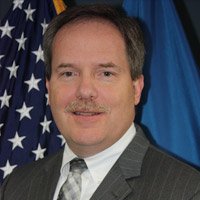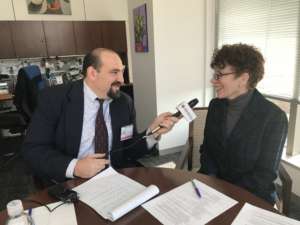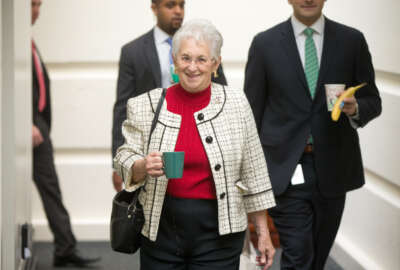
NSF aiming to stay ahead of the technology innovation curve
Dorothy Aronson, the chief information officer of the NSF, said a new user interface for its grants application system will come online in April.
The National Science Foundation receives about 40,000 proposals a year for research, education and training projects. Of those, it awards grants to about 11,000 organizations.
When NSF automated its proposal acceptance system known as FASTLane in 2003, it was a bit ahead of its time. Now it’s taking another huge step to make applying for grants even easier.
Dorothy Aronson, the chief information officer of the NSF, said the modernization is focused on FASTLane’s user interface by applying automated tools in the cloud to make the grant application process even easier.
“In February, we will begin previewing the tool so customers can begin to try it out and give us some feedback so we can incorporate it into the April soft launch,” Aronson said on Ask the CIO. “The FASTLane is on a modern infrastructure, but the look and feel of the application has not changed significantly since its initial release. In recent years, we’ve supplemented some of the FASTLane components with new pieces in Research.gov. The new proposal submission is gradually going to replace the look and feel of FASTLane with new components that are going to be attached to Research.gov infrastructure.”
She said the new tools will help structure some of the data input and compliance challenges faced with the current version.

“People will not have to submit proposals and then have them sent back for various reasons, so it’s going to be making sure that the submissions are more accurate,” she said. “The group of people that are creating the specifications describing what it will look like is huge and it’s from every branch of the organization.”
Aronson, who became permanent CIO in December after serving as acting CIO since May, said a few years ago this group got together to begin the process by standardizing the language around common terms like proposal submission due times. Aronson said, for example, proposals are due at 5 p.m., but it wasn’t clear if it was Eastern Standard Time or Pacific Standard Time or what.
The upgrades to FASTLane are part of NSF’s push to be more innovative.
Aronson said as technology continues to evolve, the business processes need to catch up, especially when compared to the commercial sector.
“I’m beginning to spend a lot of time looking at emerging technologies. Right now, we are about at marketplace at the NSF, so we are in a great place. We need to be looking a little further down the runway than we had in the past,” she said. “I’ve been working with the CIO Council’s Innovation Committee and talking a lot about the implementation of artificial intelligence (AI) components.”
The goal, for NSF, and probably many agencies, is to figure out how to integrate these emerging technologies into their day-to-day business practices.
Aronson said NSF started pulling together use cases where AI could be a benefit for its processes, and then could these components also be a utility for other agencies to take advantage of through a shared services of sorts.
“The first one was using AI to identify what we call conflicts of interest. That is when a particular person at NSF submits a proposal and that proposal will be reviewed by many other people. We have to make sure those other people don’t have an unfair relationship with the person who created the proposal,” she said. “Right now, this work is laborious. When people are putting together panels, they have to do close research about the proposals and figure out who is not involved, and often the communities of people who are experts in these areas are not large so it becomes very difficult to avoid conflicts. It seems like a computer could do this pretty easily, not only looking at existing information, but also maybe looking out into the internet.”
Aronson said there are several ongoing efforts to automate this conflict of interest challenge. So NSF is “neural network” so people could work together and possible merge efforts together and possible solve the problem without additional funding.
“We are really early in the stages, but each of them has something that is a little further along than this central notion,” she said. “One of the things we want to do as we are looking at this particular example is to also create a process around how we are doing it. If we can figure out a good way we can share the network information, if we can find a way to find other ideas like this one that is so important and so frustrating that they are inventing solutions, then we could leverage everyone’s individual effort into something that is a combined effort.”
NSF also is considering using AI to ensure it isn’t receiving the same proposal twice. Aronson said it’s all about simplifying the work of proposal submitters and reviewers.
Copyright © 2025 Federal News Network. All rights reserved. This website is not intended for users located within the European Economic Area.
Jason Miller is executive editor of Federal News Network and directs news coverage on the people, policy and programs of the federal government.
Follow @jmillerWFED






